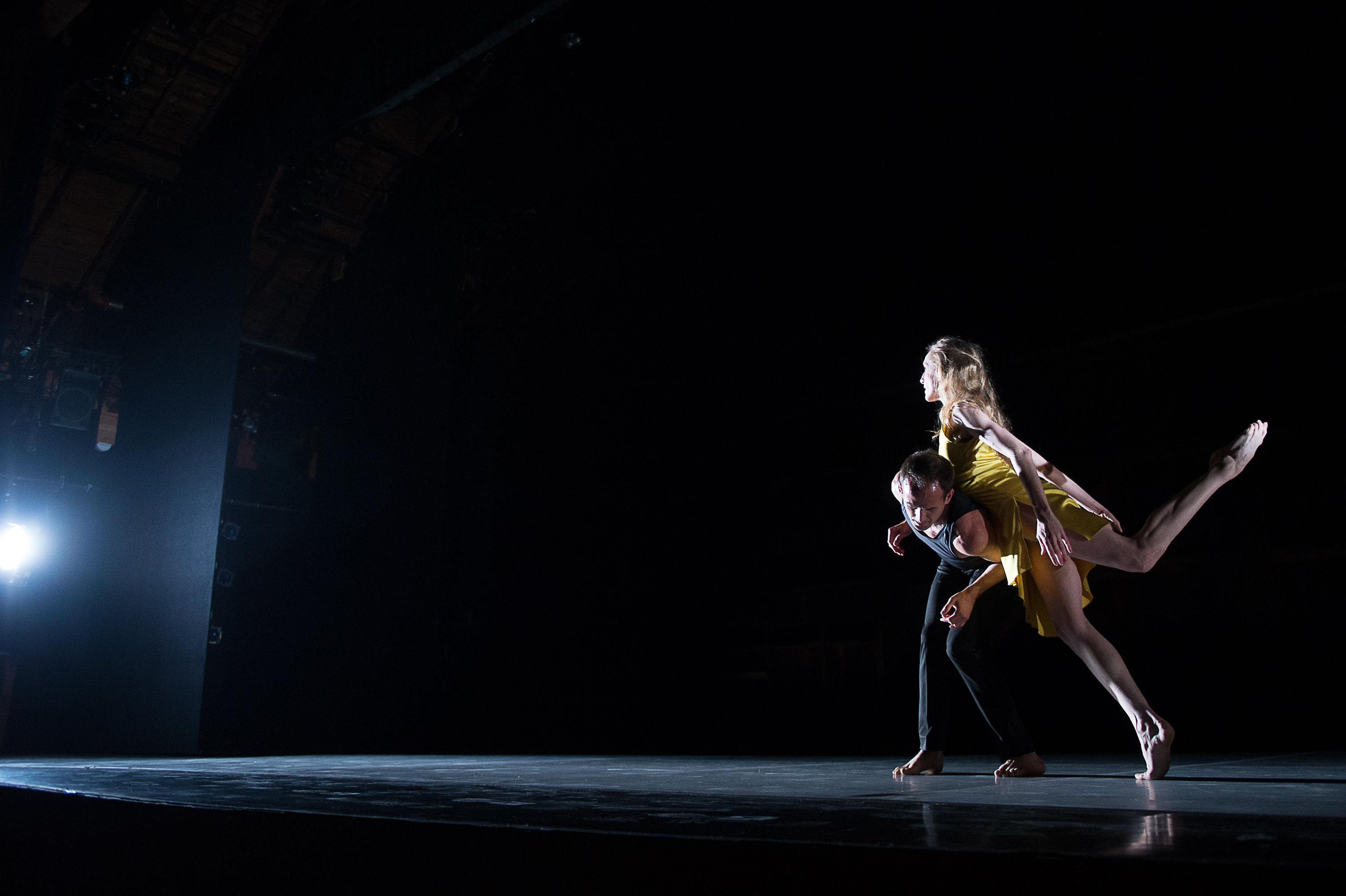CHICAGO — A one-nighter last Saturday marked the second of NYC-based Brian Brooks’ Chicago engagements during his tenure as the inaugural choreographer in residence at the Harris Theater, and his second collaboration with retired New York City Ballet super star Wendy Whelan.
Whelan and Brooks each had their own solos to diversify the night’s gaggle of duets, capping the work with a reprise of their previous collaboration as one of a series of duets in Whelan’s Restless Creature a couple years ago. And in the two years since we last saw her in Chicago, Whelan’s movement quality is silkier, her center of gravity lower, her sense of fall and recovery deeper. In a way, the ballerina is learning on the job, for even after a three decades long career amongst the best of the best in ballet, contemporary dance is a different game.

In that sense, too, Brian Brooks is a perfect partner, a glorious mover with sensitivity, and sensibility. The two, when they move together, appear equal, and equivalent – a situation unusual to any principle ballerina.
The curtain rose on a bare back wall and exposed lighting instruments above and on the sides of the Harris’ stage, softened by a shimmery brocade breaking the cold, black climate across the upstage space. The set hung above four music stands, the place which the acclaimed string quartet Brooklyn Rider would soon occupy. Of Some of a Thousand Words‘ five movements, only the first would highlight a single musician – in this case virtuoso cellist Michael Nicolas.
The work is composed more of moments, and ideas, giving up little in the way of a narrative arc or emotional investment despite dances-for-two’s strong will to do so. In fact, Some of a Thousand Words was, at times, perhaps more a music concert with dance rather than a dance concert with music, for Brooklyn Rider’s contributions were as great as that of the movers onstage, but several, if not most, of those moments still resonated…
…the opening phrase, for example: a sweeping pass of low lanky arms softly wagging to and fro from the shoulder, and then morphing into the rest of the body as the two weaved around and about one another. Or a chair dance in which Whelan softly fell into Brooks’ arms, only to sit and lean outward with feet flexed. Or Whelan’s backwards-facing trust falls to Brooks’ back, amidst the repetitive rainfall of Philip Glass’ noodling melodies in the piece’s final movement.
Despite its merits, I’m left wondering if I’d feel the same way about Some of a Thousand Words if it weren’t legends who were the ones on the stage. Maybe that doesn’t matter, for it’s because of their status, their history, and the chutzpah it takes to try something new that it felt so important to bear witness.
